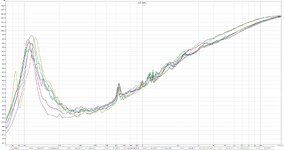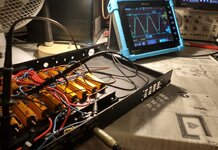easstudios
Well-known member
Bit of a nerdy test. Apologies that its so dull!
Compared how the power amp of my 2 channel Dual Rectifier (early Rev G) responds with different loads. In each graph, it shows the frequency graph of a Mesa OS 4x12 with 8 Ohm V30's compared to various load boxes. I suspect this will vary with different power amps and different cabs quite a lot (ill try and compare those a little later). This is one of those things where there are a lot of variables interacting with each other, so there really is no "single best" option - I'd really recommend trying as many as you can with your own set up and deciding what you like from there. I love all 3 loads I tested here and they get pretty equal amounts of use.
I used the Rectifier, because the red channel has no NFB which means the cab/load will have a bigger impact. I've often found Rectifiers can sound quite dull with some loads, especially compared to the response you get in the room with a Mesa cab. It also explains why those motherfuckers are fussy with which cab you use. I've always liked the Suhr with the Rectifier, and since picking up the Fryette, warm and edge was my favourite sounding curve. Nice to have some visual validation of what I was hearing






Compared how the power amp of my 2 channel Dual Rectifier (early Rev G) responds with different loads. In each graph, it shows the frequency graph of a Mesa OS 4x12 with 8 Ohm V30's compared to various load boxes. I suspect this will vary with different power amps and different cabs quite a lot (ill try and compare those a little later). This is one of those things where there are a lot of variables interacting with each other, so there really is no "single best" option - I'd really recommend trying as many as you can with your own set up and deciding what you like from there. I love all 3 loads I tested here and they get pretty equal amounts of use.
I used the Rectifier, because the red channel has no NFB which means the cab/load will have a bigger impact. I've often found Rectifiers can sound quite dull with some loads, especially compared to the response you get in the room with a Mesa cab. It also explains why those motherfuckers are fussy with which cab you use. I've always liked the Suhr with the Rectifier, and since picking up the Fryette, warm and edge was my favourite sounding curve. Nice to have some visual validation of what I was hearing


